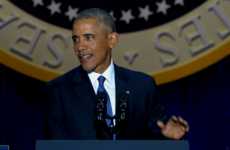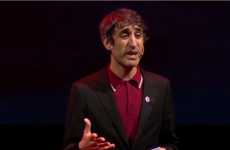
Need Inspiration?
Get inspired by 4,000+ keynote speaker videos & our founder, a top keynote speaker on innovation.
In Her Talk on Burial, Caitlin Doughty Discusses Changing Values
Riley von Niessen — April 11, 2017 — Keynote Trends
References: orderofthegooddeath & youtube
Caitlin Doughty, a mortician and the founder of The Order of the Good Death, starts out her talk on burial practices in a rather shocking way, telling her audience, "When I die, I would like for my body to be laid out and eaten by animals." While she admits that this isn't for everyone, she uses her own views to expose how people's thoughts are changing when it comes to burial practices, as well as how these methods differ among other cultures.
She continues by going over the most common practices in Western nations, where chemical embalming, burial at a cemetery, and cremation, are the most popular forms of sending off the dead. In addition to these practices being incredibly costly, they're hard on the environment. When people choose embalming and burial for the dead, they're sanitizing the body by replacing the blood with cancerous formaldehyde, and placing them into wooden or metal caskets that use unnecessary resources and prevent bodies from naturally decaying. Cremation, which is generally considered to be more environmentally friendly, uses exponential amounts of gas as well.
As these methods are not sustainable, Doughty has joined to help the many others who wish to adapt Western burial practices to be less harmful to the environment. One alternative is composting, which allows the body to be reduced to soil in about six weeks time. At this point, the body is transformed into molecules that can then be used to create new life. Conservation cemeteries, Doughty says, are an eco-friendly alternative to traditional grave sites. The resting places of the dead are usually only traceable with GPS technology, and these cemeteries allow bodies to flourish into new life as they are guaranteed to never be built over.
She continues by going over the most common practices in Western nations, where chemical embalming, burial at a cemetery, and cremation, are the most popular forms of sending off the dead. In addition to these practices being incredibly costly, they're hard on the environment. When people choose embalming and burial for the dead, they're sanitizing the body by replacing the blood with cancerous formaldehyde, and placing them into wooden or metal caskets that use unnecessary resources and prevent bodies from naturally decaying. Cremation, which is generally considered to be more environmentally friendly, uses exponential amounts of gas as well.
As these methods are not sustainable, Doughty has joined to help the many others who wish to adapt Western burial practices to be less harmful to the environment. One alternative is composting, which allows the body to be reduced to soil in about six weeks time. At this point, the body is transformed into molecules that can then be used to create new life. Conservation cemeteries, Doughty says, are an eco-friendly alternative to traditional grave sites. The resting places of the dead are usually only traceable with GPS technology, and these cemeteries allow bodies to flourish into new life as they are guaranteed to never be built over.
6
Score
Popularity
Activity
Freshness
















